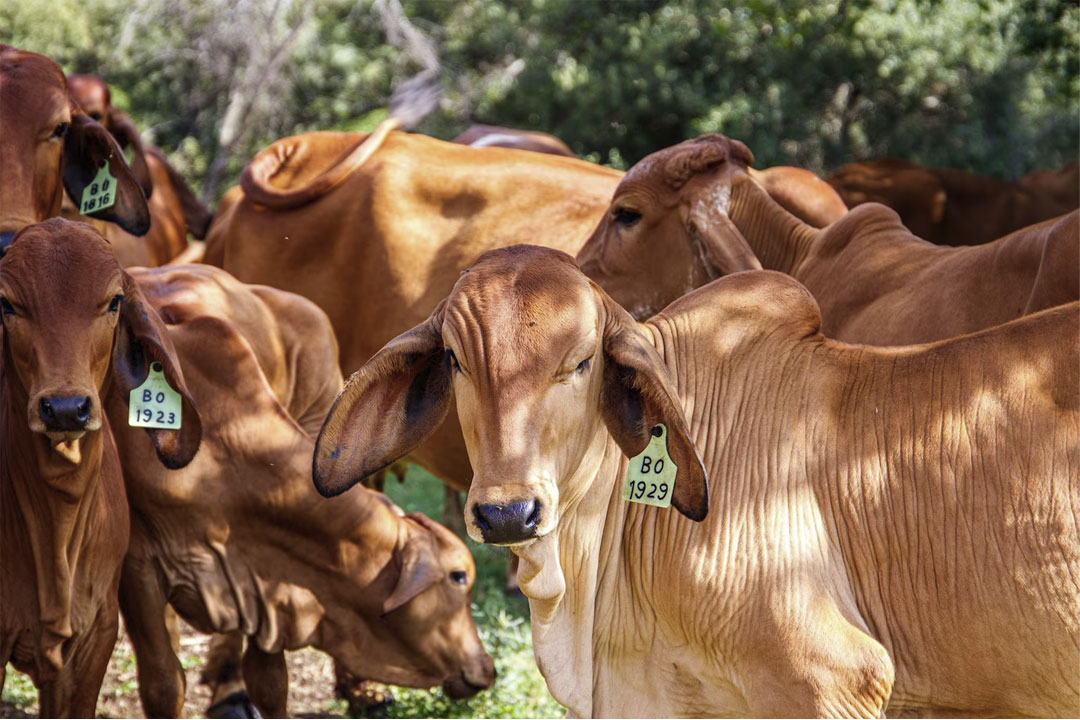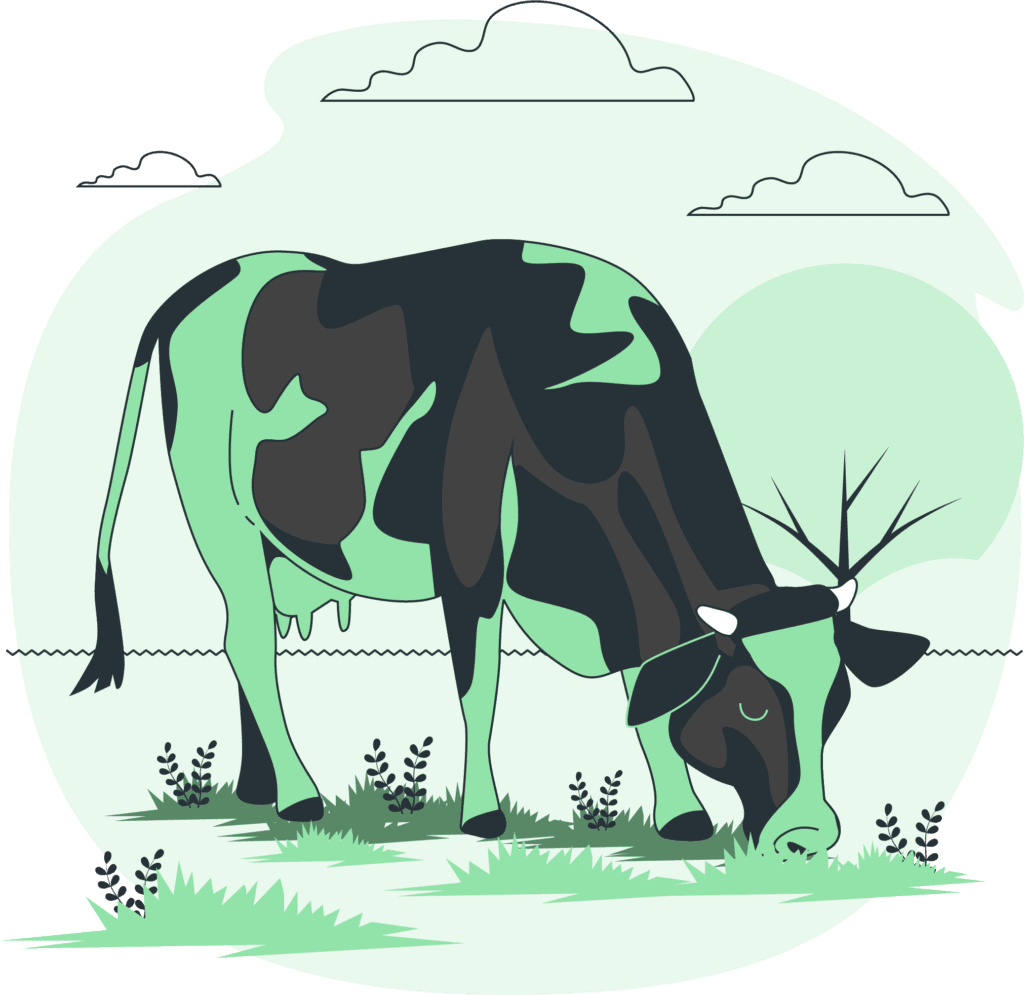
Cattle farming management requires proper planning and decision-making to ensure that the herd is healthy and productive. This guide will provide an overview of cattle farming management, including breeding, calving, grazing, and supplementary feeding. It will also highlight special considerations for traditional or smallholder systems, as well as drought feeding and general health management.
Breeding Management
To maximize animal performance, heifers for bulling should be selected on weight and conformation, and they should have achieved 65% of mature body mass, which is at 18-24 months of age. Bulling season should occur from November to April, and heifers should be bulled 4-6 weeks earlier than cows. The gestation period is approximately 280 days. In single-sire herds, the bull ratio should be 2½ – 4%, and in multiple-sire herds, it should be 4%, depending on the system and standard of management. Pregnancy diagnosis should occur 6-10 weeks after the end of the bulling season.
For traditional or smallholder systems, communal areas are often overgrazed, and crop residues supply around 50% of cattle feed. Fencing is usually absent, and different farmers run their cattle together as one herd, making it impossible for individual farmers to practice controlled breeding. To improve animal performance, smallholders can embark on the selection and culling of stock, cull poor quality bulls from the communal herds and purchase bulls of improved genetic merit, and give indigenous bulls preference. In such systems, the bulling ratio should be around 2.5%, as animals are running together throughout the year.
Calving Management
Calving management is crucial to ensure high productivity levels. For traditional or smallholder systems, the calving percentage is around 55-60%, and the mortality rate is around 3-25%. For commercial systems, the calving percentage is around 66-80%, and the mortality rate is around 1-5%. Calves should be dehorned at 1-3 weeks and castrated any time up to two weeks before weaning. The recommended castration methods include burdizzo (from three months onwards), elastrator (use before calves are three days old), and knife castration. Weaning should occur at 6-8 months.
Cattle Handling Facilities
Proper cattle handling facilities are essential to ensure the safety and welfare of the animals. Site selection should involve gently sloping ground with good drainage and readily available water.
Grazing Management
Grazing management is critical to ensure that the carrying capacity of the veld is not exceeded. Stocking rates should be managed to maximize production per head, as overgrazing reduces grass re-growth and seed production. It is essential to rest the veld and control bush encroachment to promote grass growth. Pastures should be managed to avoid contamination by toxic substances that may harm the animals or enter the food chain and become harmful to consumers. Animals should not be exposed to human excreta as this may lead to possible infection with Taenia saginata, resulting in beef measles, a zoonotic disease.
Supplementary Feeding
Supplementary feeding is necessary for the dry season when the feeding value of the veld is low. It supplies extra protein and other nutrients that will improve animal performance. Supplementary feeding should start as soon as animals start losing weight, and priority should be given to in-calf heifers, lactating 1st calvers, cows in calf (second year), yearling heifers, yearling steers, and weaners. In the smallholder sector, priority can also be given to draft power animals.

HEALTH
Vaccinations
Calves
Calf paratyphoid (at 3 weeks if it is a problem)
Rift Valley Fever (where endemic)
Rift Valley Fever Booster (in problem areas)
Anthrax, Quarter Evil at 3 months
Quarter Evil at 6 months
Contagious abortion S19: Heifer calves at 4-10 months
Yearlings
Rift Valley Fever Booster (in problem areas)
Anthrax, Quarter Evil once a year
Cows
Anthrax, Quarter Evil once a year
Brucellosis, TB once a year or every two years (depending on the prevalence of the diseases in the area).
Tick Control
Ticks are a major problem for livestock as they suck blood and transmit diseases such as heartwater, theileriosis, anaplasmosis, cowdriosis, and ehrlichiosis. Tick control is therefore very important in cattle farming. Here are some ways to control ticks:
• Acaricides: can be applied in a number of forms, such as sprays, dips, pour-ons, injectables, ear tags, and collars.
• Biological control: can be used to reduce the number of ticks in the environment. This includes introducing tick predators or using biological control agents such as fungi, bacteria, and nematodes.
• Cultural control: this involves practices such as pasture management and grooming the animals to remove ticks.
• Genetic control: some breeds of cattle are naturally more resistant to ticks than others, so selecting resistant breeds can help to control tick infestations.
• Integrated tick management: a combination of the above methods can be used to effectively control ticks and reduce the risk of tick-borne diseases.
In conclusion, cattle farming management involves various aspects such as breeding management, calving management, grazing management, supplementary feeding, pen-fattening, drought feeding, and general health management. Proper management of these aspects can lead to improved animal performance, increased profitability, and reduced losses due to diseases, droughts, and other factors. However, it is important to note that different management strategies may be required for different farming systems and that consultation with experts and extension staff may be necessary for effective implementation.


















